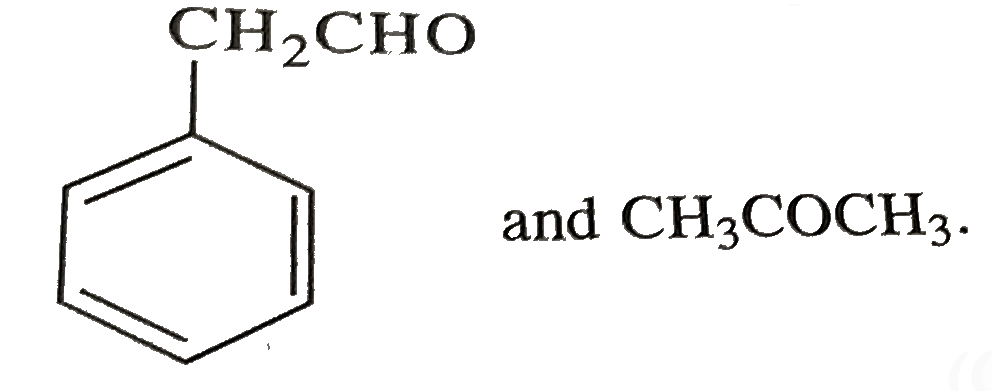Which test is used to distinguish aldehydes from Ketones?
Tollen's test
Fehling's test
Both (A) & (B)
None of the above
The correct Answer is:C
To determine which test is used to distinguish aldehydes from ketones, we can analyze the characteristics of both functional groups and the specific tests mentioned.
1. Identify the Functional Groups:
- Aldehydes have the functional group -CHO (carbonyl group at the end of the carbon chain).
- Ketones have the functional group -C(=O)- (carbonyl group within the carbon chain).
Hint: Remember the structural difference between aldehydes and ketones; aldehydes have a hydrogen atom attached to the carbonyl carbon, while ketones have two carbon groups attached.
2. Understand Tollens' Test:
- Tollens' test involves the use of ammonical silver nitrate (Tollens' reagent).
- Aldehydes can reduce silver ions to metallic silver, resulting in a silver mirror on the test container. Ketones do not react with this reagent.
Hint: Recall that Tollens' test is specific for aldehydes due to their ability to be oxidized.
3. Understand Fehling's Test:
- Fehling's test uses Fehling's solution, which consists of two solutions (Fehling A: CuSO4 solution and Fehling B: sodium potassium tartrate).
- Aldehydes reduce the blue copper(II) ions (Cu²⁺) to red copper(I) oxide (Cu₂O), while ketones do not produce this reaction.
Hint: Remember that the formation of a red precipitate indicates a positive test for aldehydes.
4. Conclusion:
- Both Tollens' test and Fehling's test are used to distinguish aldehydes from ketones. Since both tests yield positive results for aldehydes and negative for ketones, they can be used effectively for differentiation.
Final Answer: The tests used to distinguish aldehydes from ketones are both A (Tollens' test) and B (Fehling's test).
Summary:
- Tollens' Test: Positive for aldehydes (silver mirror formation).
- Fehling's Test: Positive for aldehydes (red precipitate formation).
- Final Answer: Both A and B.
- Aldehydes have the functional group -CHO (carbonyl group at the end of the carbon chain).
- Ketones have the functional group -C(=O)- (carbonyl group within the carbon chain).
- Tollens' test involves the use of ammonical silver nitrate (Tollens' reagent).
- Aldehydes can reduce silver ions to metallic silver, resulting in a silver mirror on the test container. Ketones do not react with this reagent.
- Fehling's test uses Fehling's solution, which consists of two solutions (Fehling A: CuSO4 solution and Fehling B: sodium potassium tartrate).
- Aldehydes reduce the blue copper(II) ions (Cu²⁺) to red copper(I) oxide (Cu₂O), while ketones do not produce this reaction.
- Both Tollens' test and Fehling's test are used to distinguish aldehydes from ketones. Since both tests yield positive results for aldehydes and negative for ketones, they can be used effectively for differentiation.
- Tollens' Test: Positive for aldehydes (silver mirror formation).
- Fehling's Test: Positive for aldehydes (red precipitate formation).
- Final Answer: Both A and B.
Similar Questions
Lucas test is used to distinguish
View SolutionIn aldehydes and ketones
View SolutionWhich of the following reagents can be used to distinguish Benzaldehdyde from acetophenone?
View SolutionWrite two chemical tests to distinguish ethyne from ethene
View SolutionWhich test is used to distinguish between Phenols and aliphatic alcohols ?
View SolutionThe reagent which can be used to distinguish acetopheone from benzophenone is :
View SolutionThe reagent which can be used to distinguish acetopheone from benzophenone is :
View SolutionHow will you distinguish between aldehydes and ketones?
View SolutionGive a test to distinguish between aldehyde and ketone.
View SolutionWrite test to distinguish between

View Solution
